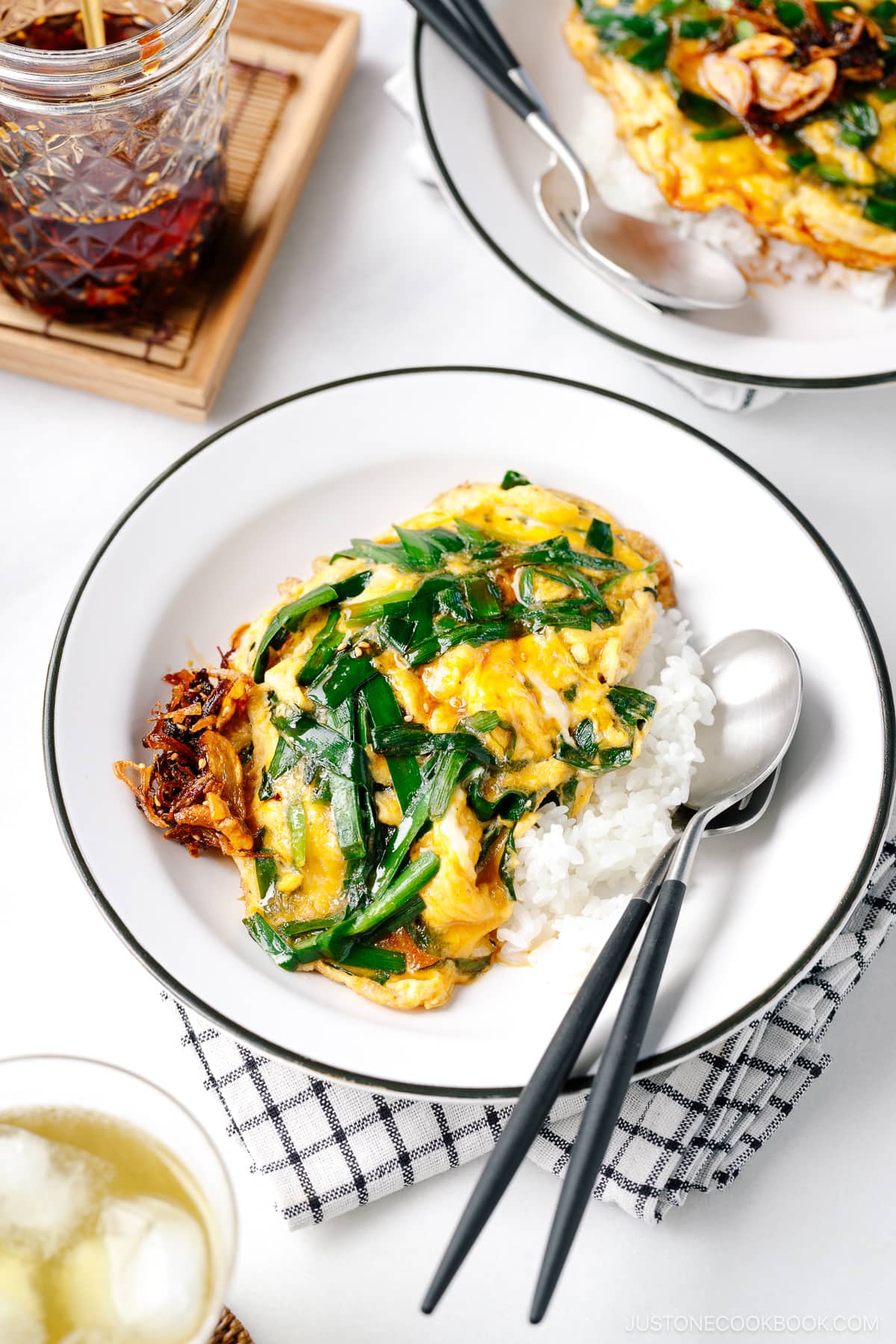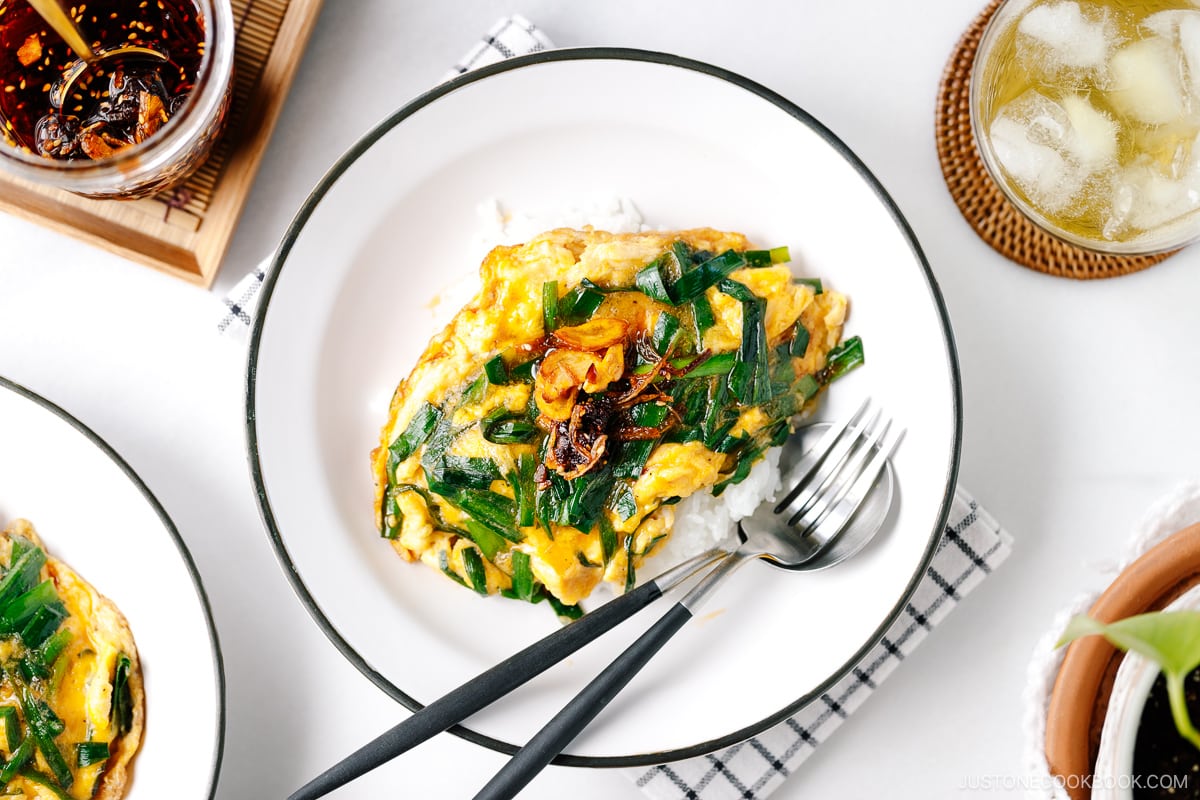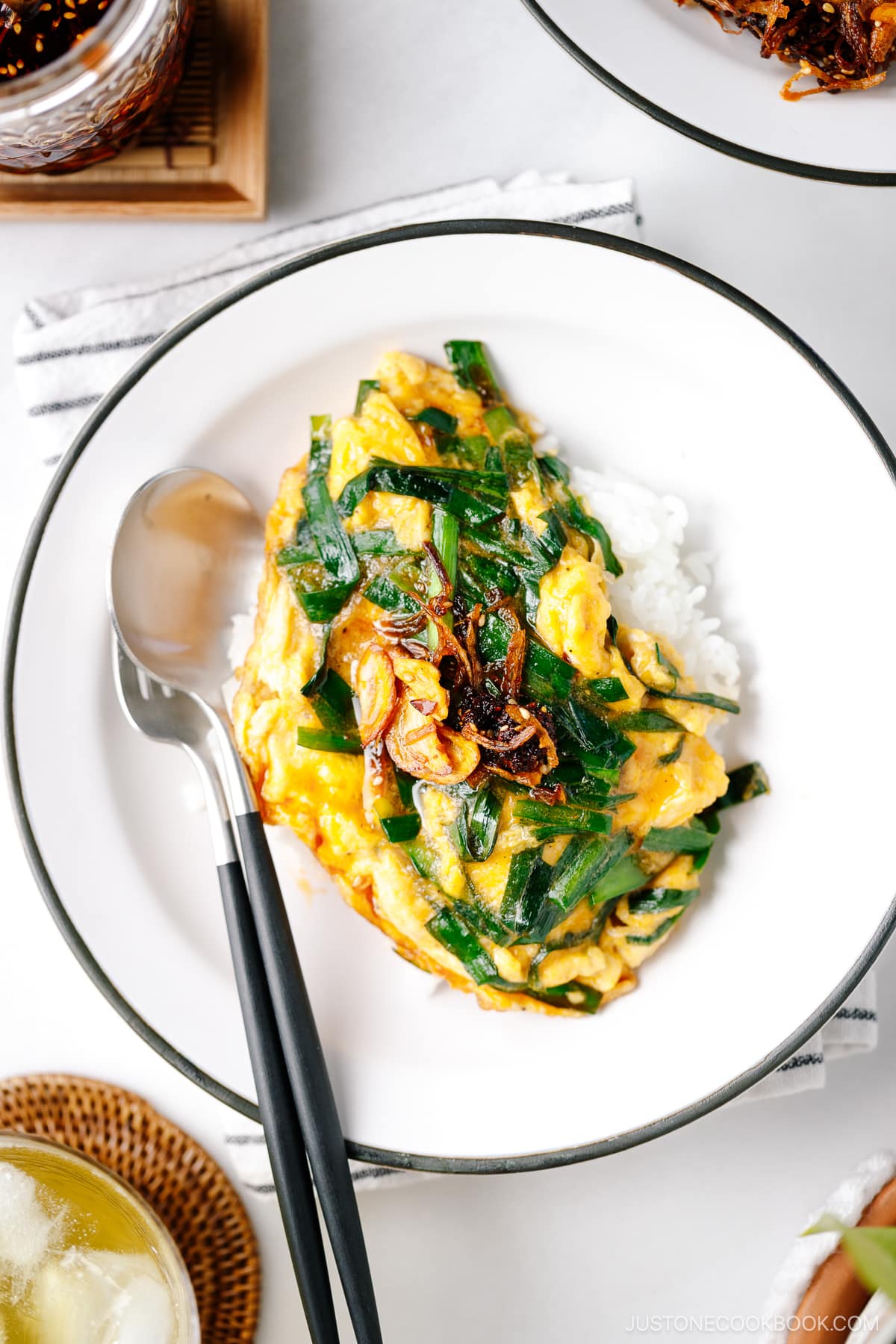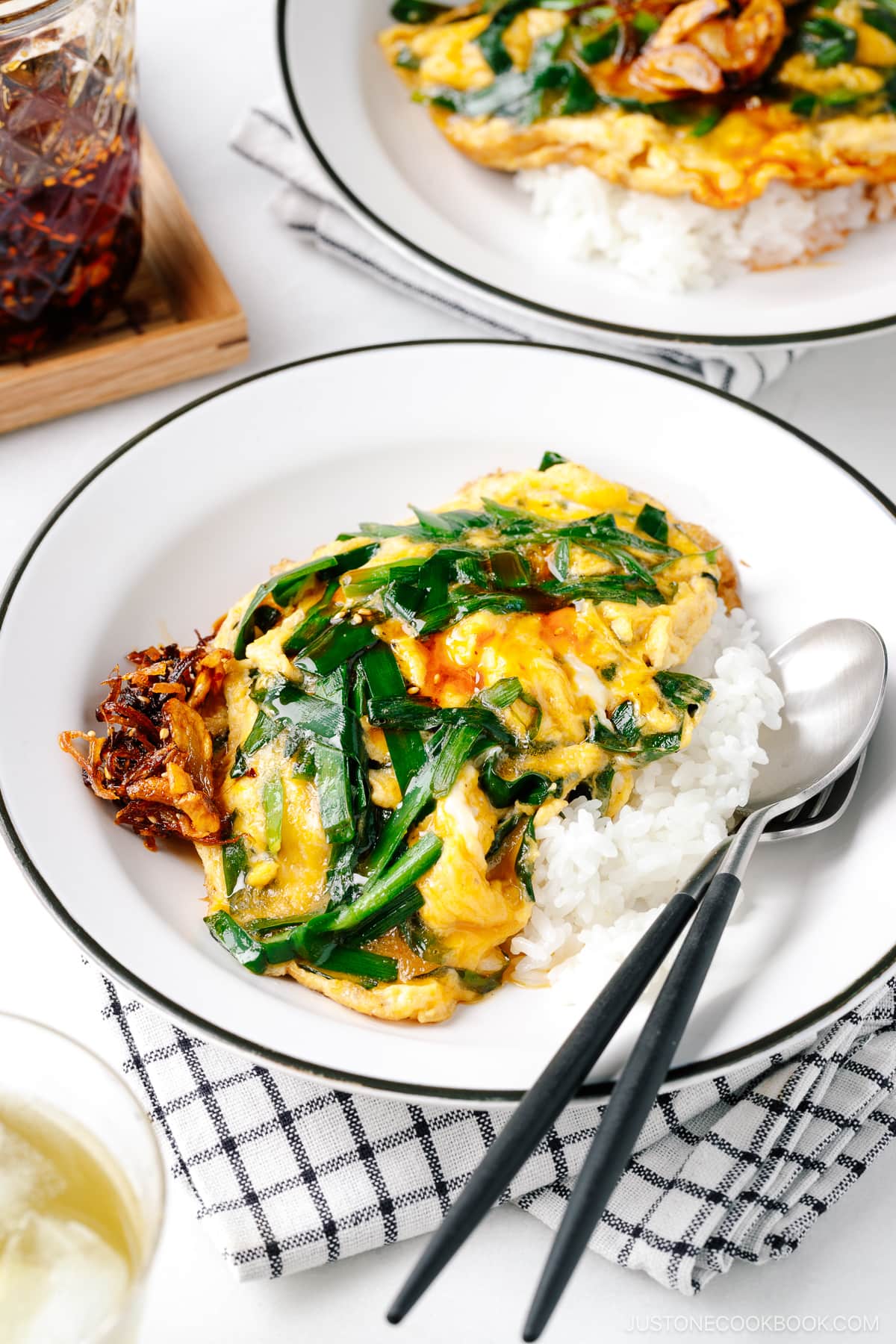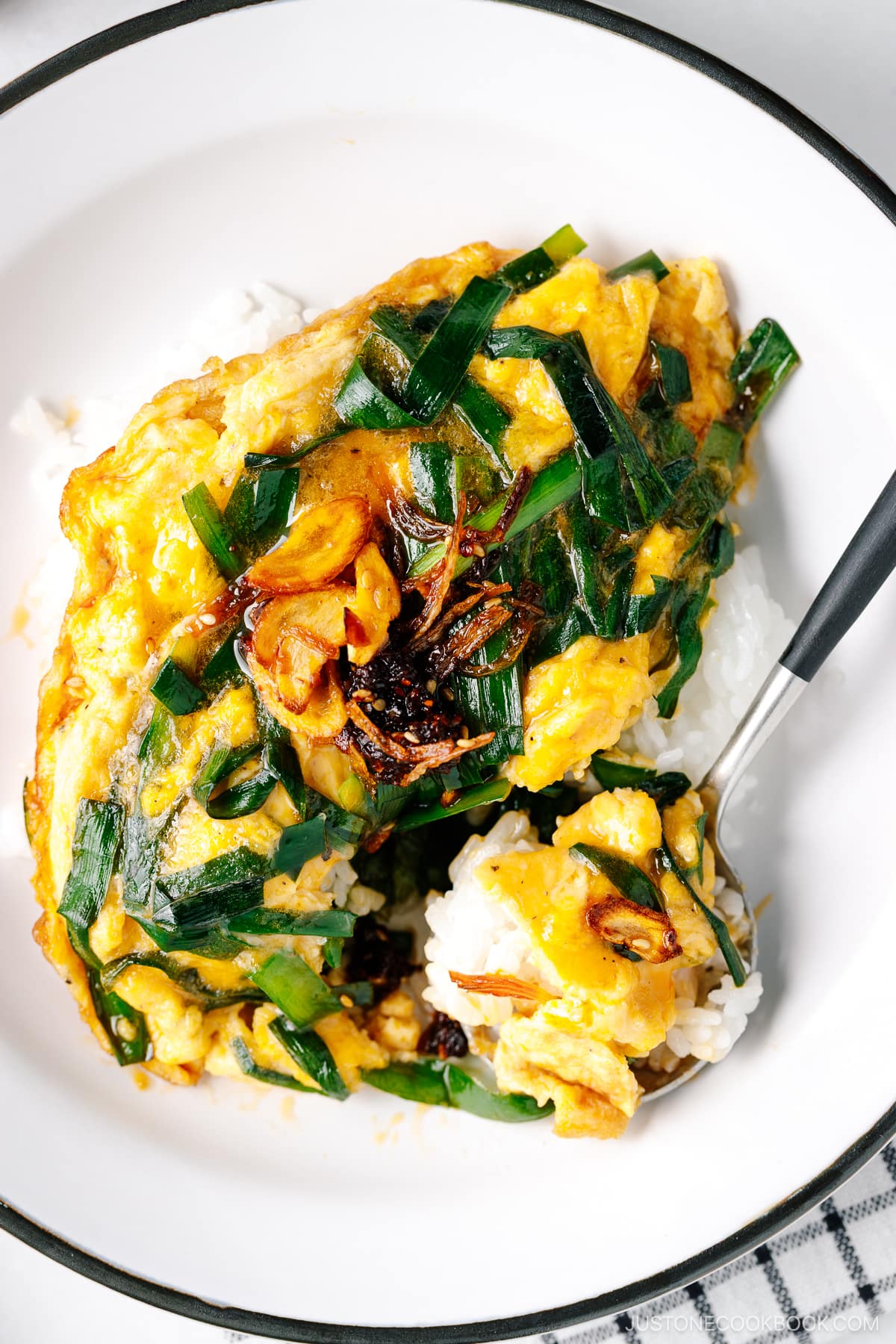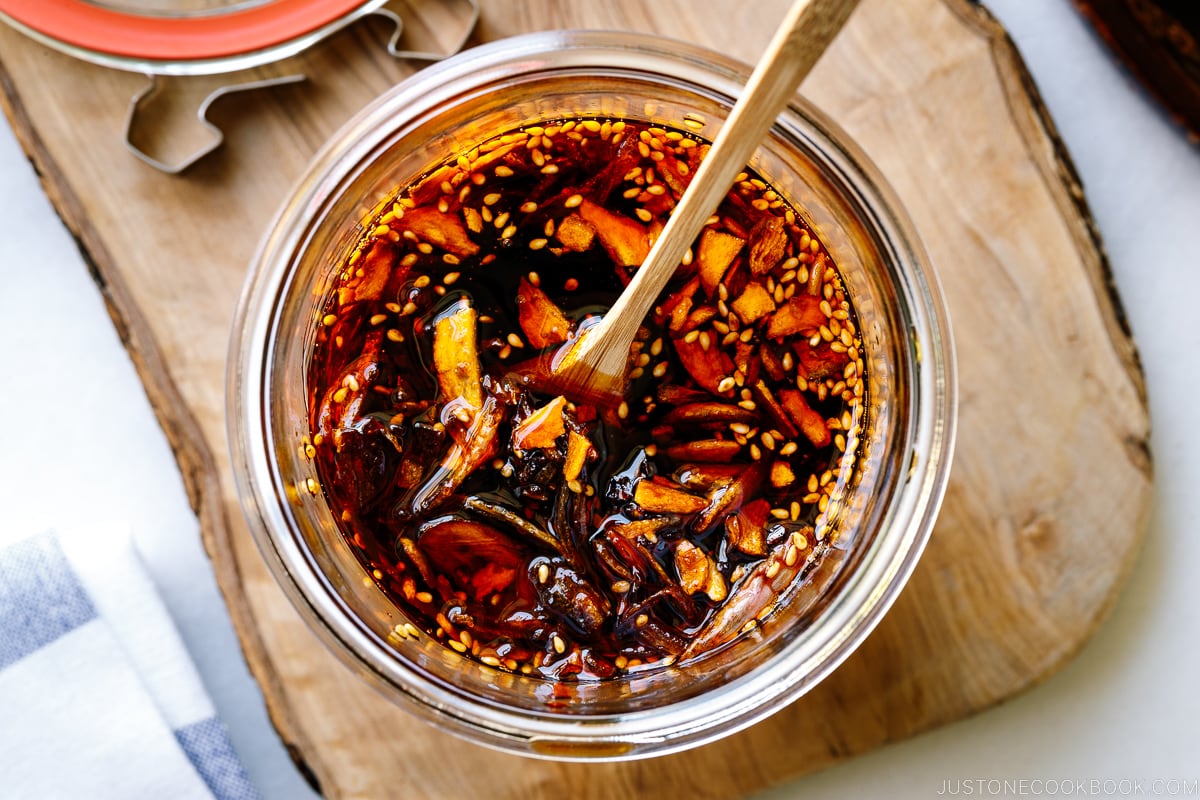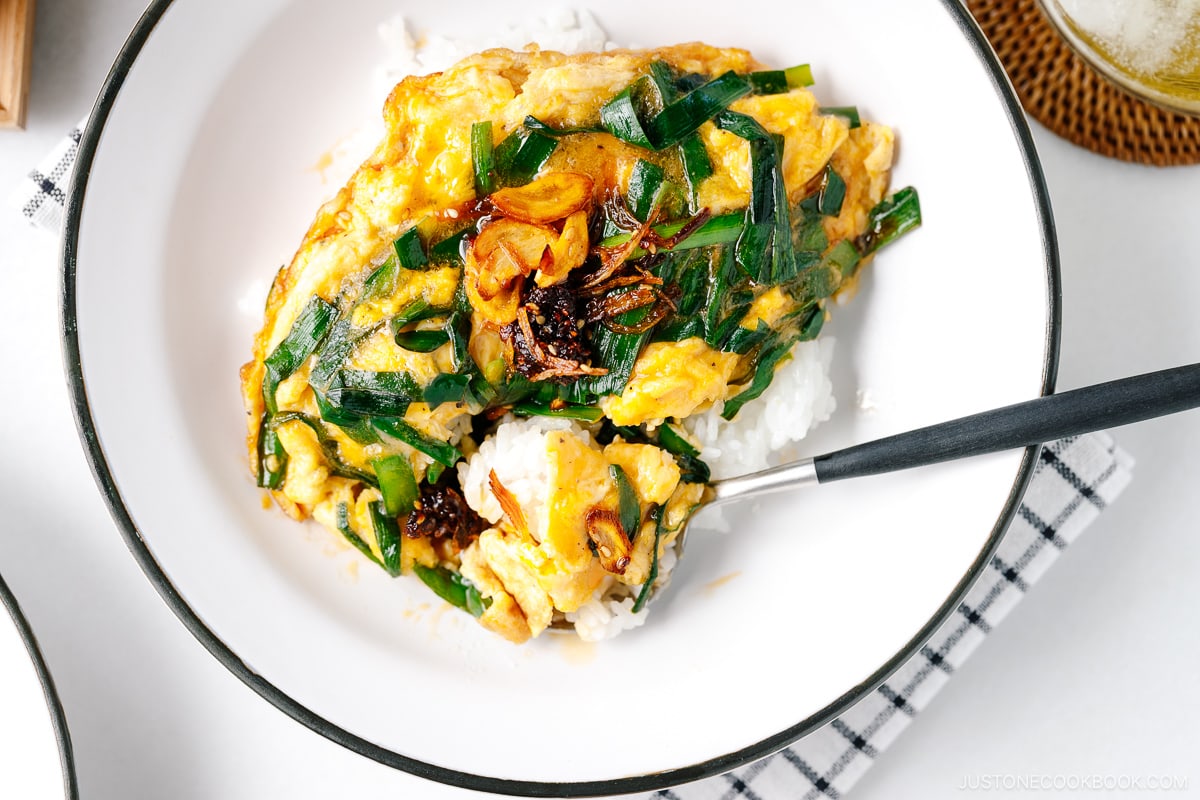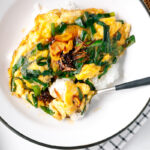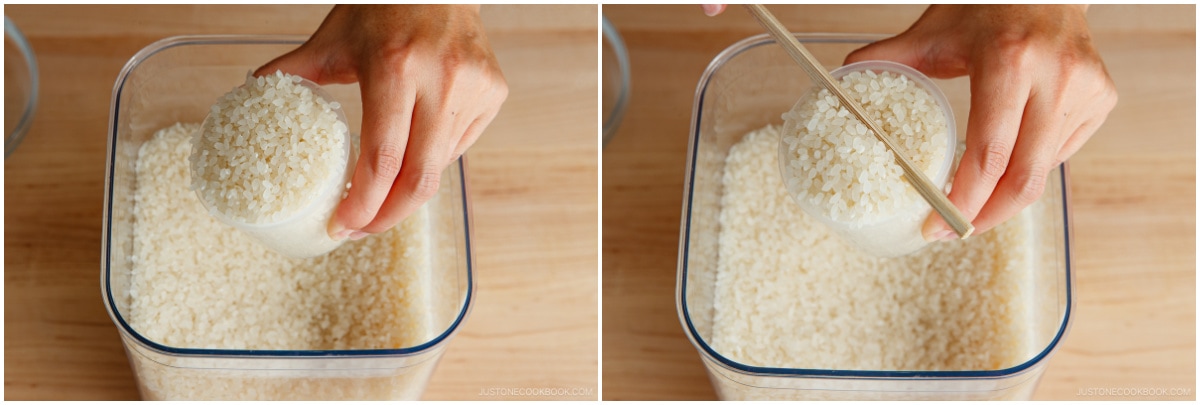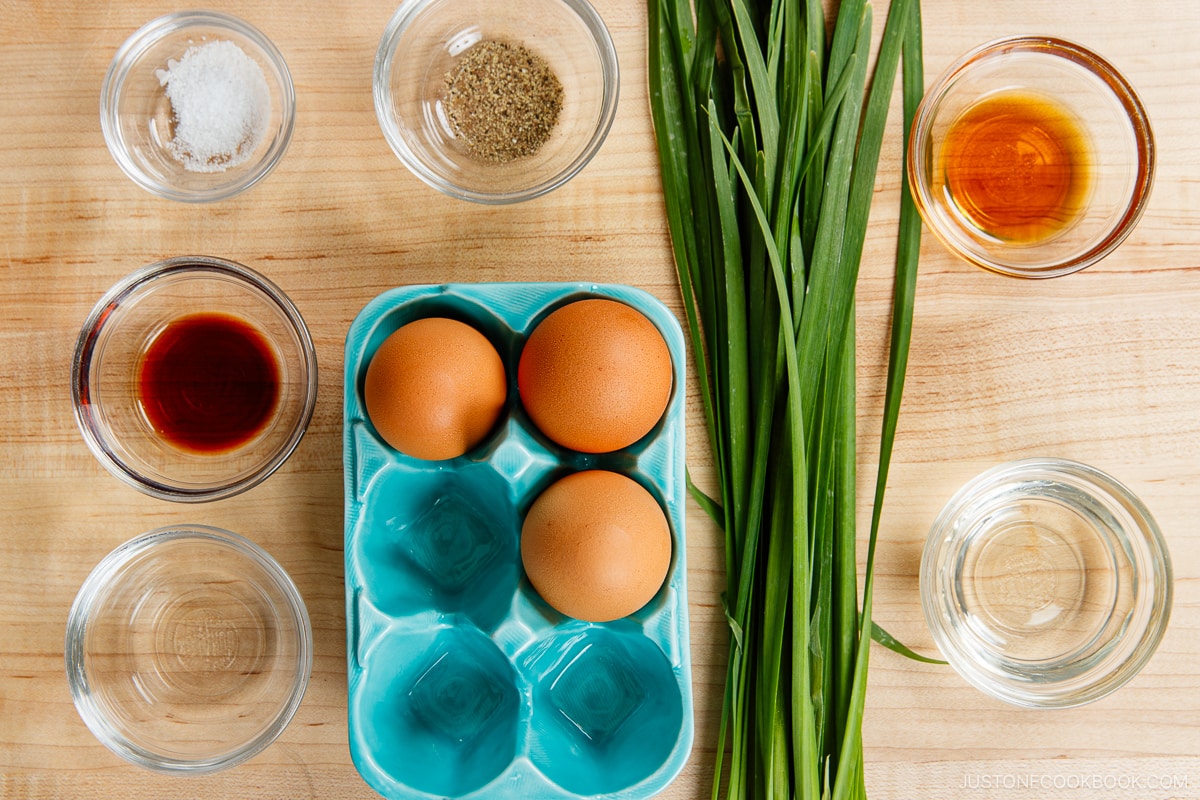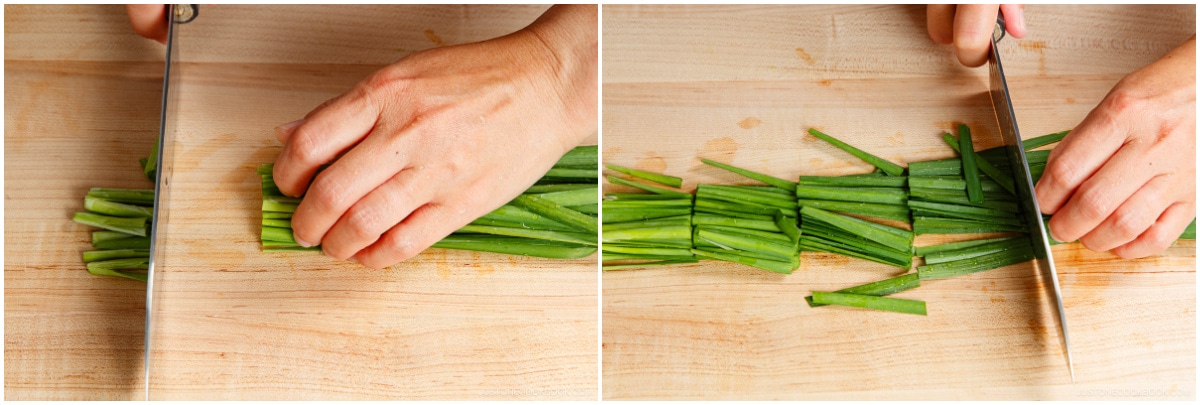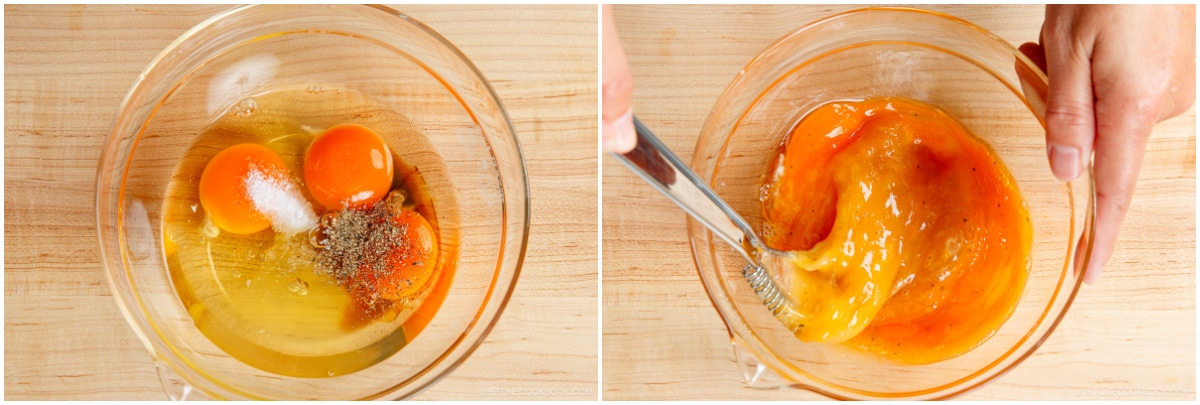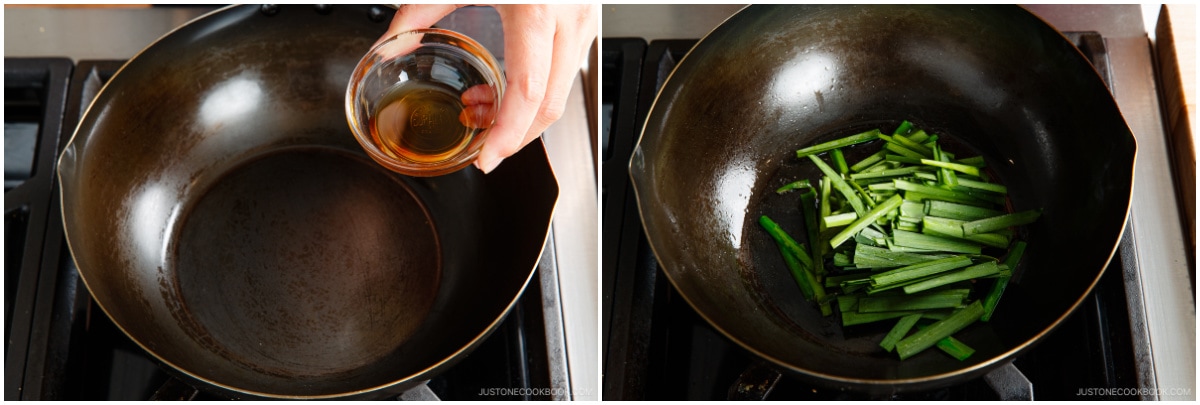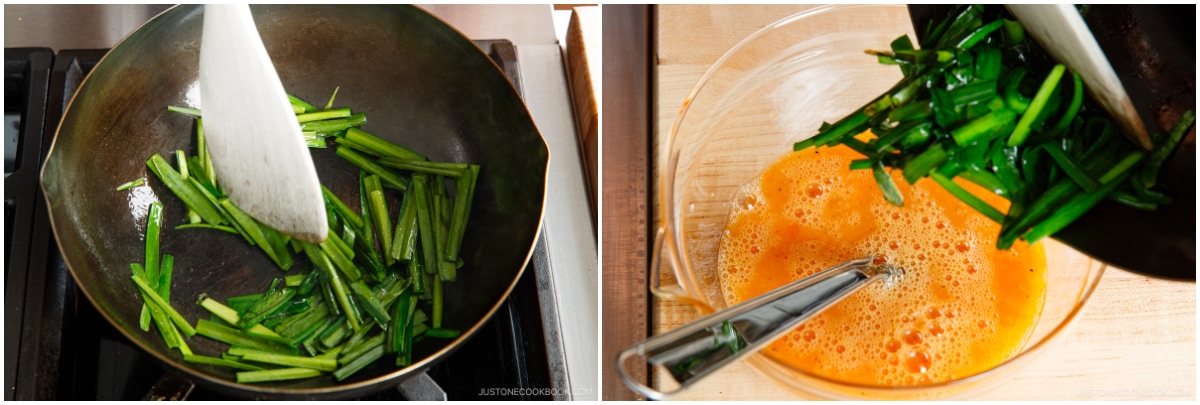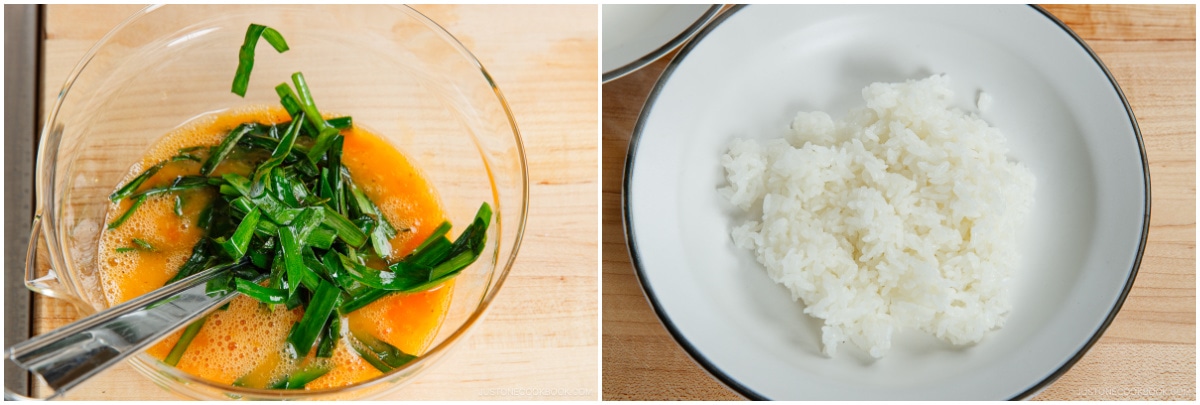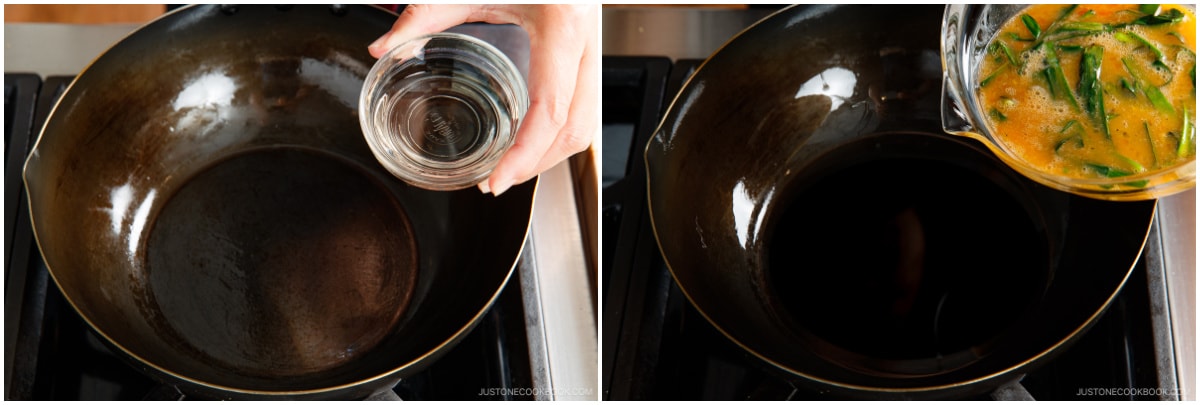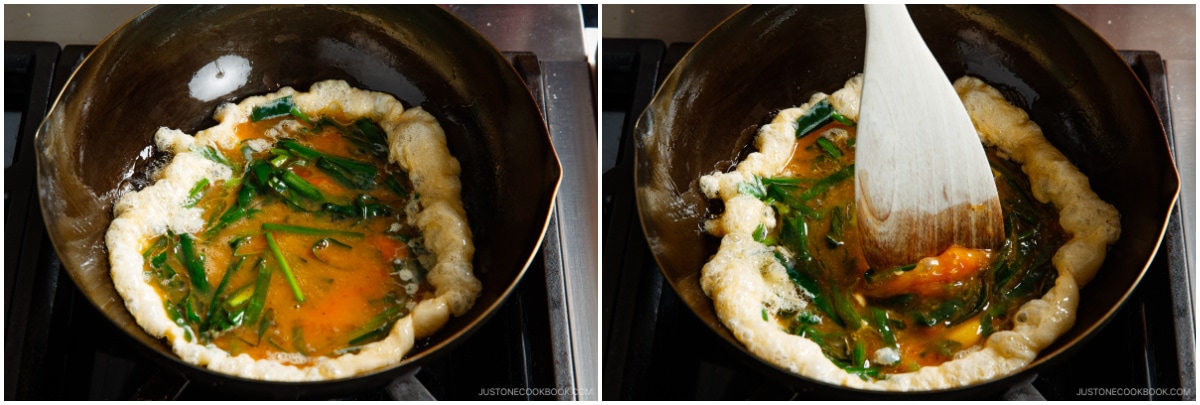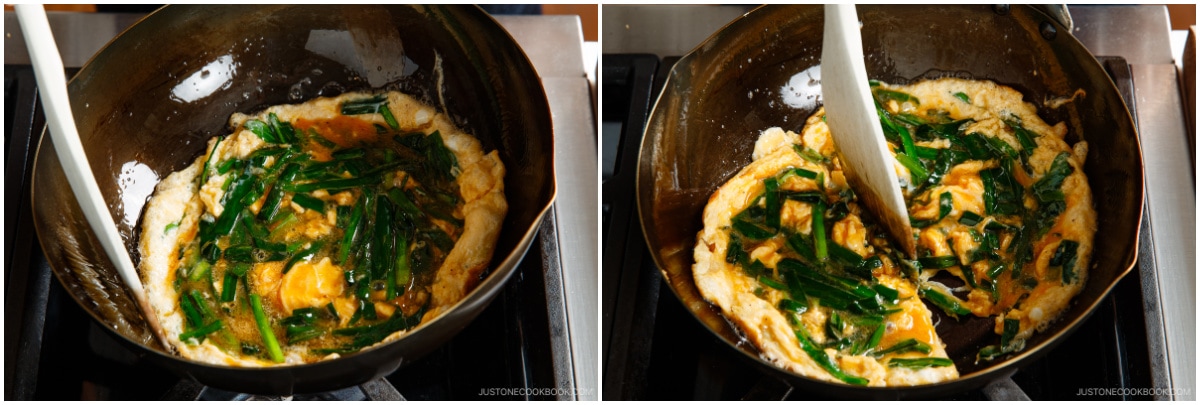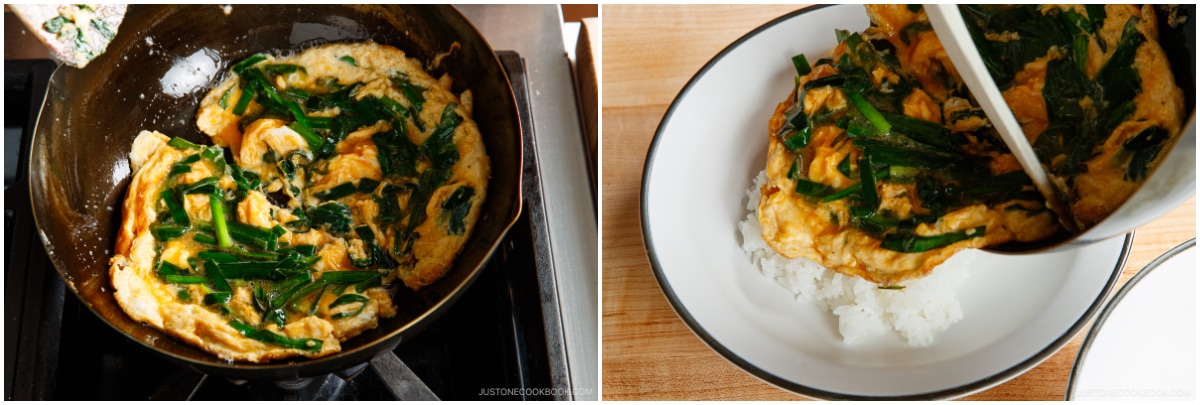In my many years of cooking for the family, I’ve learned to count on one-pan and one-bowl recipes for busy weekdays. When the kids come home hungry, I can immediately cook up a decent hot meal for them without having to succumb to take-out or instant noodles! If you find yourself in need for inspiration, I would love for you to try Niratama Donburi (ニラ玉丼ぶり), or Garlic Chives and Egg Over Rice! This is a wholesome yet delicious recipe that anyone can rustle up in just 10 minutes! If you have eggs and chives in the fridge and frozen rice in the freezer, you’re good to go.
What’s Niratama?
Niratama (ニラ玉) literally means garlic chives (nira in Japanese) and egg (tama shorten for tamago). Here, we have eggs and garlic chives cooked until they are fluffy yet crispy on the outside and soft on the inside, and serve it over steamed rice. In Japan, you’ll find several variations of niratama. Some dishes are covered with a thick sweet and sour gravy sauce called an (あん) or ankake (あんかけ) like Tenshinhan. Some dishes come with dashi-based sauce. Some look more like a regular stir-fried dish. Today, I share my version, the way my family likes it. It’s very simple to follow, but you’re welcome to adapt and modify the recipe. More suggestions below!
How to Make Stir-Fried Garlic Chives and Egg
The Ingredients You’ll Need
Garlic chives (also called Chinese Chives or Nira in Japanese) – Why use garlic chives? This allium plant is very popular in East Asian and Southeast Asian cooking because of their subtle taste of garlic with a bit of onion flavor. I love how much they can transform a simple fried egg into something so flavorful, colorful, and full of texture. Eggs Seasonings – sake, soy sauce, salt, and black pepper Cooking oil – sesame oil and neutral oil
The Cooking Steps
Variations with Add-on Protein
I keep this recipe vegetarian-friendly, but Japanese home cooks do like to add a small portion of sliced pork loin or pork belly to make buta niratama (豚ニラ玉, buta means pork in Japanese). Besides pork, shrimp or firm tofu would work great. Keep in mind that the protein should be a small portion since the garlic chives and eggs are the star of the dish. Cook the protein first, before you cook the garlic chives. Take them out to a plate as soon as it’s done cooking. Add them back after your egg is almost done cooking in the wok. All you need to do is to combine it with the egg mixture.
Cooking Tips
Do not overcook garlic chives. The flat leafy parts get cooked really fast. Start with the thick stems, then add the leafy parts. You don’t need to stir-fry for a long time. Distribute the oil to the sides of the wok (or frying pan). This way, when you slide the eggs, they won’t stick to the wall. The wok (or frying pan) should be really hot when you add the egg mixture. The hot oil will immediately cook the eggs from the edges and the eggs will float. That’s how you make fluffy eggs. If the oil is not hot, this will not happen. Keep in mind that the remaining heat will continue to cook the eggs. When the eggs are not runny anymore, turn off the heat or remove the wok from the heat. Use a small portion of the protein, if you are adding. Garlic chives are easy to blend into the egg mixture, but the pieces of protein won’t be. So, keep it in a small portion.
Spice It Up!
We love adding some of my homemade Crunchy Garlic Chili Oil (Taberu Rayu) to the egg. Compared to Chinese brands of chili crisps, Japanese chili oil is milder on the spice level. Don’t let the red color intimidate you. My kids who don’t typically tolerate heat well actually enjoy this.
What to Serve with Niratama Donburi
You can enjoy the rice bowl as it is. For a more complete or elaborate meal, serve the stir-fried garlic chives and egg dish with rice, along with other side dishes and a soup.
Soup: Wonton Soup, Tomato and Tofu Miso Soup, or Kabocha Miso Soup. Salad: Salad with Carrot Ginger Dressing, Japanese Potato Salad, or Harusame Salad. Sides: Miso Glazed Eggplant, Japanese Roasted Kabocha Squash, or Okra with Ginger Soy Sauce.
Wish to learn more about Japanese cooking? Sign up for our free newsletter to receive cooking tips & recipe updates! And stay in touch with me on Facebook, Pinterest, YouTube, and Instagram. Editor’s Note: This post was originally published on January 15, 2014. It’s been updated with the new video and new step-by-step and final images on October 6, 2023.
